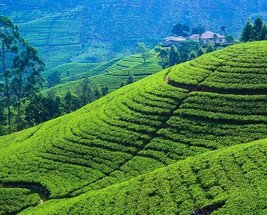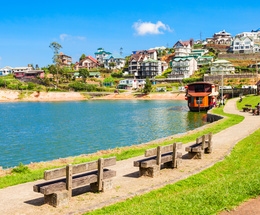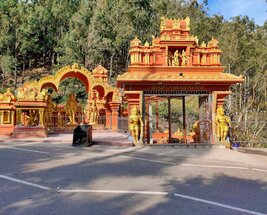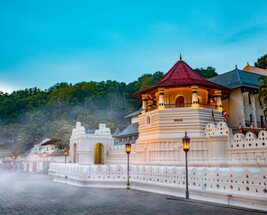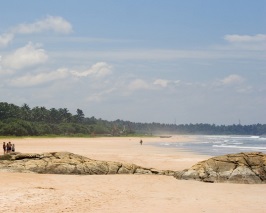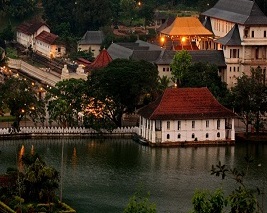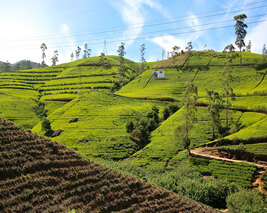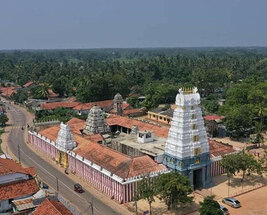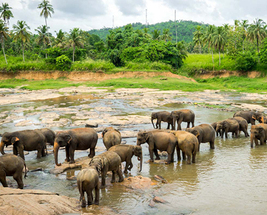Best Time to visit Sri Lanka
Truckloads of friendliness, chests laden with golden warmth and pockets full of sunny charm are some of the virtues that set Sri Lanka apart. This tropical abode boasts immense history, culture, spirituality, biodiversity and adventure – in equal splendour. From the balmy coasts to the buoyant beaches, bountiful hills, blanketed plantations and beckoning forests, this diverse topography is a traveller’s dream come true.
The nation experiences the distinct seasons of dry and wet. In understanding Sri Lanka’s climate, one would have to familiarise themselves with its monsoon periods - south western monsoon and north eastern monsoon. The former brings rain to the south western region of Sri Lanka, between the months of May and November, and remains dry from December to April. The latter brings rain to the north and eastern coastal regions of Sri Lanka, between the months of October and January, and remains dry from May and September.
When it comes to the best time to visit Sri Lanka, one would have to consider a host of things. Luckily, we’ve put together this easy guide to help you make your decision seamlessly. Take a look at the break-up of each season and all it has to offer.
Peak Season – For all you culture connoisseurs out there, the curry coast of Sri Lanka is especially sweet during the months of December to April! This dry period witnesses an influx of travellers who tour the heritage ruins, ornate temples, colonial churches and magnificent nature nooks, with comfort and ease.
Shoulder Season – September to November
Off Season – May to August
|
Travel Seasons
|
Average Temperature
|
Season
|
|
December-April
|
22-32°C
|
Warm and dry
|
|
May-November
|
23-31°C
|
Humid with heavy rainfall
|
Sri Lanka in Summer (December-April)
Temperature: The air temperature during the dry season fluctuates between 22°C and 32°C.
Weather: During the months of December to April, most of the island country experiences a beautiful hot and dry climate. With ample sunshine, clear blue skies and lush green landscapes, this period is considered to the best climate to visit Sri Lanka in. With that being said, from October to January, the East and North cities remain wet due to the Maha Monsoon period.
Significance: This is the perfect time to engage in exploration and sightseeing. In fact, the best thing to do is hit the gorgeous south and west coast beaches for some good old relaxation and fun. Furthermore, one can visit the cultural spots. From fascinating ancient ruins to exquisite temples and churches, there’s much to glimpse! Festivals such as Duruthu Perahera (Full moon day) and Thai Pongal (harvest) are particularly splendid to witness.
Why you should visit now: The month of April is graced with long, sun-kissed days. Although the climatic conditions are variable, majority of the nation witnesses warm and dry weather during this time. The atmosphere is conducive for outdoor adventures, without the worry of showers.
Things to know before the visit: December to April is peak season, with throngs of tourists flooding the shores of Sri Lanka. So, expect big crowds, lengthy queues and significantly slower service. Make your travel and hotel bookings well in advance to avoid any last-minute hindrances. Take into account factors such as seasonal airfares and school holidays.
Tips: Like with other South Asian nations, Sri Lanka experiences warm to scorching weather. So, pack a variety of light cotton clothing that is comfortable to the skin. Throw in a hat/cap, sunglasses and SP+ 30 Sunscreen. Stay hydrated through the day and consume frequent, well-balanced meals.
Sri Lanka in Monsoon (May-November)
Temperature: The air temperature during the wet season fluctuates between 23°C and 31°C.
Weather: Sri Lanka during monsoon is an unpredictable affair. The months of May to June experience the South-West monsoon wind, which endows the regions of Colombo and Galle with sharp showers of quick rain. The longer monsoon period begins in October and results in strong and sporadic rainfall. This is deemed as the North-East monsoon season, which affects part of the country.
Significance: Although it may not be prudent to go on outdoor excursions, amidst unrelenting showers, it may be possible to thrown in some sightseeing during these months. For instance, during days of moderate rainfall or drizzle, one can visit the delightful national parks and go on easy hiking trails to cascading waterfalls. The stunning sceneries will be worth all the effort!
Why you should visit now: From the mystical rock-cut architecture to the picturesque beaches, exotic forests and manicured plantations, landscapes shine brilliantly during the monsoon season. For those seeking unique experiences, this might be the best season to visit Sri Lanka in. From the sights to the sounds and smells, it is nothing short of breath-taking.
Things to know before the visit: The wet season is signified as low season. During this time, you’ll find fewer travellers traversing the region. Hotels and resorts will look to entice customers with amazing deals and discounts, so make sure to optimise on this! This is a lovely time to enjoy the peace and serenity.
Tips: Sri Lanka’s distinct monsoon seasons (Yala and Maha) require appropriate attire. Make sure you pack an umbrella, windcheater, gumboots or rain sandals. Throw in some mosquito repellent, for all those hikes and forest visits. Make sure your electronic gadgets are waterproof or sheltered in plastic bags.
The weather of Sri Lanka in monsoon differs from that in summer. So, have you decided on what’s your best time to visit? Look through our Sri Lankan Tour Packages and start planning your trip to this wonderful place!





